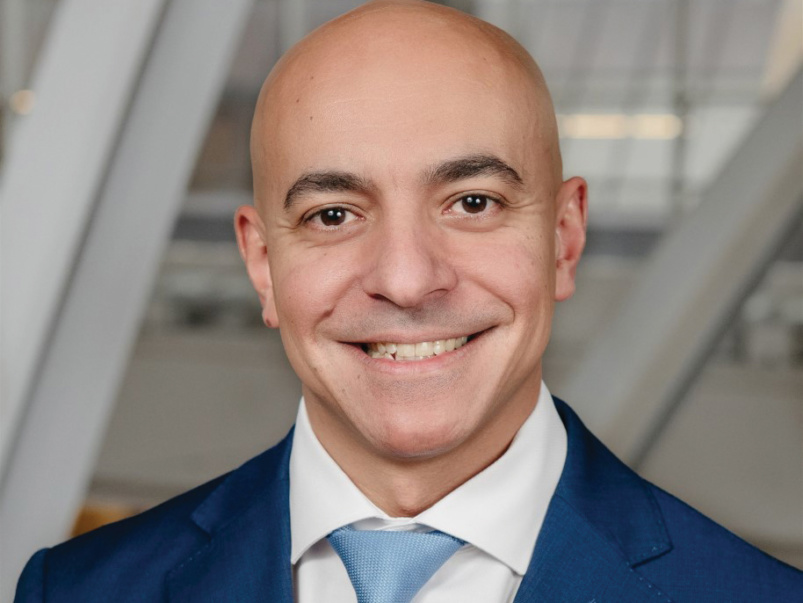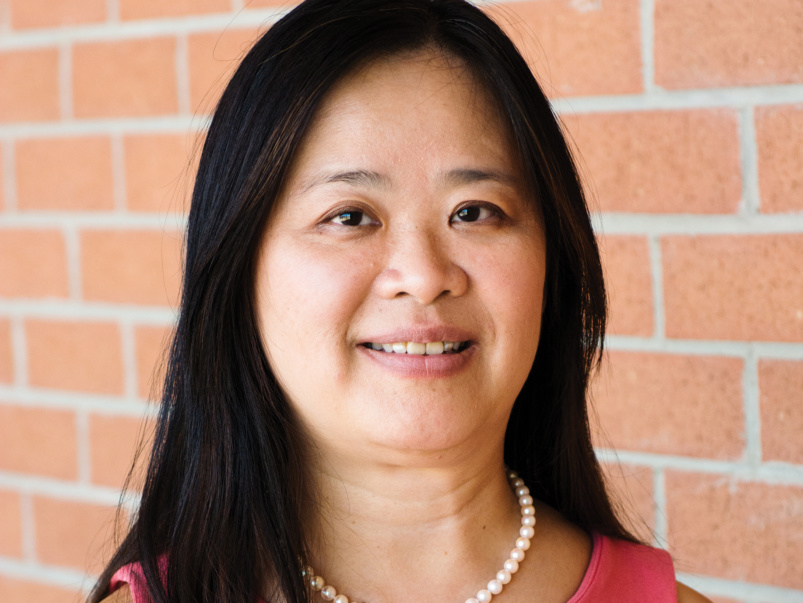The e-health revolution: UHN’s Sam Sabbah on his amazingly wait-free virtual emergency departments
Sam Sabbah, UHN’s chief of emergency medicine, just launched a virtual department. We asked him how it works

Sam Sabbah is chief of the emergency department at Toronto General Hospital. In partnership with St. Mike’s and Sunnybrook, he helped launch UHN’s new virtual emergency department in December 2020, making it possible for patients to get assessed by emergency medical providers without leaving their couches. He talked to Toronto Life about how the virtual ED works, what kind of wait times you can expect (hint: a lot less than eight hours), and why many of us—if we’re lucky—might never need to go to the emergency room again.
When I think of an emergency department, I picture ER or Grey’s Anatomy. What’s different about UHN’s new virtual version?
Basically it’s a tool that brings providers and patients together through videoconferencing so diagnoses and recommendations can be made quickly and conveniently.
Why the need for a virtual emergency department?
Our mandate is to be there for patients whenever they need us. I frequently see patients who’ve travelled for hours to get here—they might need specialized care and are concerned their local hospitals aren’t equipped to handle it. Often, we find trips can be avoided if we can assess the patient remotely.
We were thinking about virtual care before the pandemic hit, but Covid accelerated our plans. In September of 2020, we partnered with St. Mike’s and Sunnybrook and approached the Ministry of Health about setting up a virtual ED at those hospitals and Toronto General. We launched the service in September.
Let’s say I have a stomach ache and want to visit the virtual ED. I log on to my computer, and then what?
First, you click a link on the UHN website and see a list of available same-day appointment times. Then a nurse practitioner will phone you to gather additional information. If you need a referral to a clinic, the nurse will make it. If you’re experiencing an issue best managed by a family physician, the nurse will direct you there. If they conclude that you should visit the virtual ED, they’ll pass along any background information to the attending physician, who connects with you over Microsoft Teams. Some physicians provide service from the hospital, while others opt to log on from a home office.
Who’s visiting the virtual ED, and with what kinds of concerns?
Conditions include everything from rashes and injuries to concerns about side effects from a Covid vaccine. The virtual ED has been especially useful for disabled patients. One patient who uses a wheelchair said that coming into the ED for a non-life-threatening issue would be a full-day ordeal. The virtual ED allows him to access care much more easily.
How do the conditions at the virtual ED compare to what you see IRL?
A lot of people think of the emergency department like the version we see in TV shows, where there’s a cardiac arrest every five minutes. The reality is that the ED does much more than that. We help patients navigate a very complex health care system. Most patients know when they’re too sick for virtual care, but those who aren’t can now access our expertise without making the trip to the hospital. More than 75 per cent of patients who have used the service were deemed appropriate by the nurse practitioner.
Has the virtual ED reduced in-hospital wait times? Are we still looking at eight hours in the waiting room?
Well, right now we’re only seeing a small percentage of patients in the virtual ED relative to the number of patients we see in person. The virtual service is open Monday to Friday from 2 p.m. to 9 p.m., and we book two patients each hour. In our in-person ED, we see 160 to 200 patients each day. So in-person wait times haven’t been affected yet.
But virtual patients are seen immediately and on time. For instance, someone who comes in to the ED with a milder condition would be prioritized lower on the triage scale. They might wait three hours to see a provider for 15 minutes. Because virtual ED appointments are all scheduled, the wait is eliminated.
Do you see the service expanding in the future, and what might that look like?
I hope that one day we have something like the Uber model, in which patients use an app that will match their needs with available local providers. There’s a huge network of community-based labs and radiology clinics across the province. I’d like to partner with a company like LifeLabs to get expedited access to testing. This would enable patients to get their blood work done from the comfort of their own communities.
It’s especially important for patients who live in remote areas. For example, I had one patient with congenital heart disease who lived in Thunder Bay. He’d been experiencing nosebleeds and was worried enough that he travelled all the way to Toronto for an assessment. When he came in, we provided a lot of reassurance and some basic advice on the use of humidifiers. If I’d been able to assess that patient virtually and send him to a lab in Thunder Bay for testing, it would’ve eliminated the need for a trip to the hospital.












